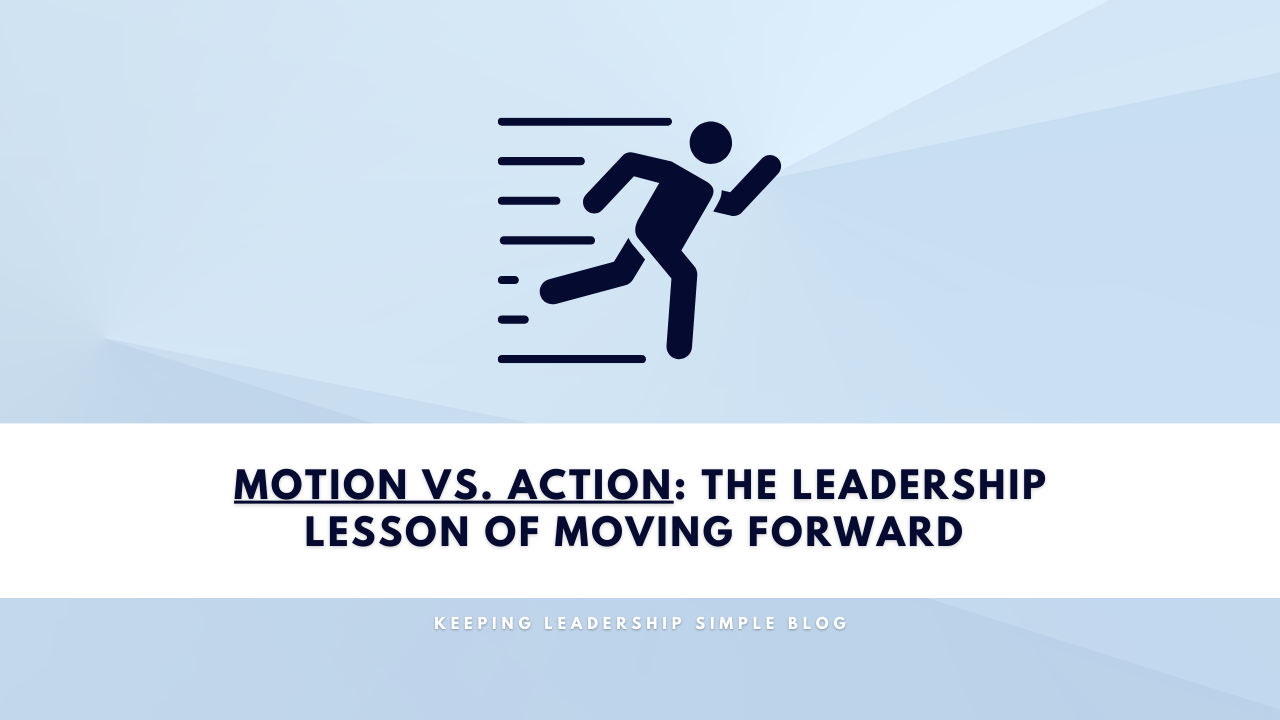Motion vs. Action: The Leadership Lesson of Moving Forward
Jan 15, 2025
In leadership, understanding the difference between motion and action can mean the difference between progress and stagnation. Both are essential to achieving goals, but too often, leaders and teams get stuck in motion—the comfortable, preparatory phase—while avoiding the discomfort of action, where real growth and results occur. Let's break down these concepts and explore why action, even when imperfect, is the key to success.
Motion: This is the planning, strategizing, and organizing phase. It's where you think through your goals, identify resources, and make decisions about the steps to take. Motion is essential to charting a path forward. It's like making airplane reservations, choosing your seat, and packing your luggage.
Action: This is where the work gets done. It's implementing the plan, taking risks, and making adjustments as needed. Flying the plane—actually boarding it and experiencing the journey—is action.
Why Leaders Get Stuck in Motion
Motion can feel productive because it involves activity—meetings, brainstorming, and preparation. But staying in motion can also become a trap. Leaders may hesitate to move forward because:
1. They fear failure.
2. They want the plan to be perfect.
3. They overvalue certainty and control.
The problem is that motion doesn't produce results. It's comfortable because it's free of risk, but it doesn't solve problems or achieve goals.
Motion vs. Action: Examples in Leadership
Motion: A police department wants to implement a new community engagement program. Leaders spend weeks in meetings discussing strategies, assigning roles, and writing reports, but never actually launch the initiative.
Result: Nothing changes for the community or the department.
Action: The department organizes a community walk-through with officers, even if all the logistics aren't perfect. The event happens, officers learn firsthand what's needed, and trust begins to grow.
Result: Progress and valuable feedback for improvement.
Another example:
Motion: A leader spends hours researching and debating the best leadership book to share with their team.
Action: The leader asks for ideas and chooses one, sends it out, and schedules a meeting to discuss its key points.
Why Action Matters
Action is where the real learning happens. It's messy and imperfect, but it's also how you discover what works and what doesn't. Taking action provides immediate feedback, allowing you to adjust your strategy as you go. Consider this quote from General George S. Patton:
"A good plan violently executed now is better than a perfect plan executed next week."
Waiting for perfection can mean missed opportunities. Leaders must embrace the uncertainty of action and trust that they will adapt as necessary.
How to Balance Motion and Action
1. Set a Time Limit on Planning: Allow motion to serve its purpose, but set a deadline for transitioning into action.
2. Start Small: You don't need to launch a massive initiative. Take one step forward and evaluate from there.
3. Focus on Results: Keep the end goal in mind. Is what you're doing moving the needle or are you spinning your wheels?
4. Learn Through Doing: Embrace action as a learning process. Mistakes made during action are often the most valuable lessons.
As a leader, your role is to know when motion is necessary and when it's time to take action. Planning has its place, but action drives results. Don't let the fear of imperfection or the allure of endless preparation keep you grounded. Leaders who take decisive steps forward, learn from their experiences, and adapt along the way will always be the ones who truly make a difference. Stop trying to create the perfect plan and start putting action to those good ideas!
- Dean
Stay connected with news and updates!
Join our email list to receive the latest news and updates from the LHLN team!
We will never sell your information, for any reason.
